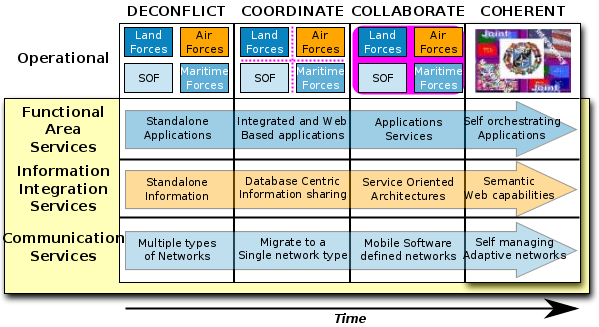2.3. Motivation
204. The NATO Network Enabled Capability (NNEC) Feasibility Study[2] highlights that "at their meeting in November 2002, the NATO C3 Board (C3B) agreed that there was a need to develop a NATO concept to adapt national initiatives such as the U.S. Network Centric Warfare (NCW) and the U.K. Network Enabled Capability (NEC) to the NATO context. This NATO concept is referred to as NNEC. The NNEC must provide for the timely exchange of secure information, utilizing communication networks which are seamlessly interconnected, interoperable and robust, and which will support the timely collection, fusion, analysis and sharing of information".
205. One of the key milestones along the route towards realising the NNEC strategy has been set out in the NATO Networked Consultation, Command and Control Interoperability Policy[3] refers.
206. In particular, the policy states "It is the intent of NATO that measures shall be put into effect by the Organization and by individual nations to ensure that information sharing requirements are met securely and expeditiously. This intent requires that appropriate interoperability solutions and procedures to match IOR over time shall be identified/developed with the nations and documented by the C3B."
207. This design rule satisfies the above requirement of the NATO Networked C3 Interoperability Policy by identifying the high level design rules required for exchange of information services.
208. Information services are the primary mechanism for information interchange in a NATO environment. This is highlighted in the NATO Networked C3 interoperability policy: "This policy identifies NATO's intent for NNC3 interoperability, and identifies the principles and responsibilities for ensuring the development and effective use of systems to provide interoperable services supporting the sharing of information across the physical, information and human domains".
